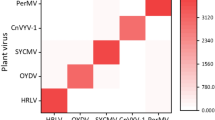Abstract
The requirement of power-dependent instruments or excessive operation time usually restricts current nucleic acid amplification methods from being used for detection of transgenic crops in the field. In this paper, an easy and rapid detection method which requires no electricity supply has been developed. The time-consuming process of nucleic acid purification is omitted in this method. DNA solution obtained from leaves with 0.5 M sodium hydroxide (NaOH) can be used for loop-mediated isothermal amplification (LAMP) only after simple dilution. Traditional instruments like a polymerase chain reaction (PCR) amplifier and water bath used for DNA amplification are abandoned. Three kinds of dewar flasks were tested and it turned out that the common dewar flask was the best. Combined with visual detection of LAMP amplicons by phosphate (Pi)-induced coloration reaction, the whole process of detection of transgenic crops via genetically pure material (leaf material of one plant) could be accomplished within 30 min. The feasibility of this method was also verified by analysis of practical samples.



Similar content being viewed by others
References
James C (2014) Global status of commercialized biotech/GM crops. ISAAA Brief No. 49.
Office of the Gene Technology Regulator (2015) Australian Government Department of Health. http://www.ogtr.gov.au/internet/ogtr/publishing.nsf/Content/cr-1
Ministry of Agriculture of the People’s Republic of China (2015). http://www.moa.gov.cn/ztzl/zjyqwgz/zxjz/201504/t20150427_4564393.htm
GMO Compass. http://www.gmo-compass.org/eng/grocery_shopping/crops/18.genetically_modified_maize_eu.html; http://www.gmo-compass.org/eng/agri_biotechnology/gmo_planting/191.gm_maize_110000_hectares_under_cultivation.html
Ministry of Agriculture of the People’s Republic of China (2010) Detection of genetically modified plants and derived products—DNA extraction and purification. No. 1485-4-2010
International Organization for Standardization (2005) Foodstuffs—methods of analysis for the detection of genetically modified organisms and derived products—nucleic acid extraction. No. 21571-2005.
Zhang F, Wang R, Wang L, Wu J, Ying Y (2014) Tracing phosphate ions generated during DNA amplification and its simple use for visual detection of isothermal amplified products. Chem Commun 50:14382–14385
Satya P, Mitraa S, Ray DP, Mahapatraa BS, Karan M, Jana S, Sharma AK (2013) Rapid and inexpensive NaOH based direct PCR for amplification of nuclear and organelle DNA from ramie (Boehmeria nivea), a bast fibre crop containing complex polysaccharides. Ind Crop Prod 50:532–536
Biswas C, Dey P, Satpathy S (2013) A method of direct PCR without DNA extraction for rapid detection of begomoviruses infection of begomoviruses infecting jute and mesta. Lett Appl Microbiol 58:350–355
Wang H, Qi M, Cutler A (1993) A simple method of preparing plant samples for PCR. Nucleic Acids Res 21:4153–4154
Hampl V, Vaňáčová Š, Kulda J, Flegr J (2001) Concordance between genetic relatedness and phenotypic similarities of Trichomonas vaginalis strains. BMC Evol Biol 1:1123
Demek T, Jenkins GR (2010) Influence of DNA extraction methods, PCR inhibitors and quantification methods on real-time PCR assay of biotechnology-derived traits. Anal Bioanal Chem 396:1977–1990
Kaneko H, Kawana T, Fukushima E, Suzutani T (2007) Tolerance of loop-mediated isothermal amplification to a culture medium and biological substances. J Biochem Biophys Methods 70:499–501
Goto M, Honda E, Ogura A, Nomoto A, Hanaki K (2009) Colorimetric detection of loop-mediated isothermal amplification reaction by using hydroxy naphthol blue. BioTechniques 46:167–172
Tomita N, Mori Y, Kanda H, Notomi T (2008) Loop-mediated isothermal amplification (LAMP) of gene sequences and simple visual detection of products. Nat Protoc 3:877–882
Cao Y, Wu G, Wu Y, Nie S, Zhang L, Liu C (2011) Characterization of the transgenic rice event TT51–1 and construction of a reference plasmid. J Agric Food Chem 59:8550–8559
Wu G, Cui H, Ye G, Xia Y, Sardana R, Cheng X, Li Y, Altosaar I, Shu Q (2002) Inheritance and expression of the cry1Ab gene in Bt (Bacillus thuringiensis) transgenic rice. Theor Appl Genet 104:727–734
Acknowledgments
This work is supported by the Synergistic Innovation Center of Modern Agricultural Equipment and Technology (NZXT01201402) and National Natural Science Foundation of China (31271617). We thank the reviewers’ elaborate advice on improving the manuscript.
Author information
Authors and Affiliations
Corresponding author
Ethics declarations
Conflict of interest
The authors declare that they have no competing interests.
Electronic supplementary material
Below is the link to the electronic supplementary material.
ESM 1
A powerless on-the-spot detection protocol for transgenic crops (PDF 1.00 mb)
Rights and permissions
About this article
Cite this article
Wang, L., Wang, R., Yu, Y. et al. A powerless on-the-spot detection protocol for transgenic crops within 30 min, from leaf sampling up to results. Anal Bioanal Chem 408, 657–662 (2016). https://doi.org/10.1007/s00216-015-9128-x
Received:
Revised:
Accepted:
Published:
Issue Date:
DOI: https://doi.org/10.1007/s00216-015-9128-x




